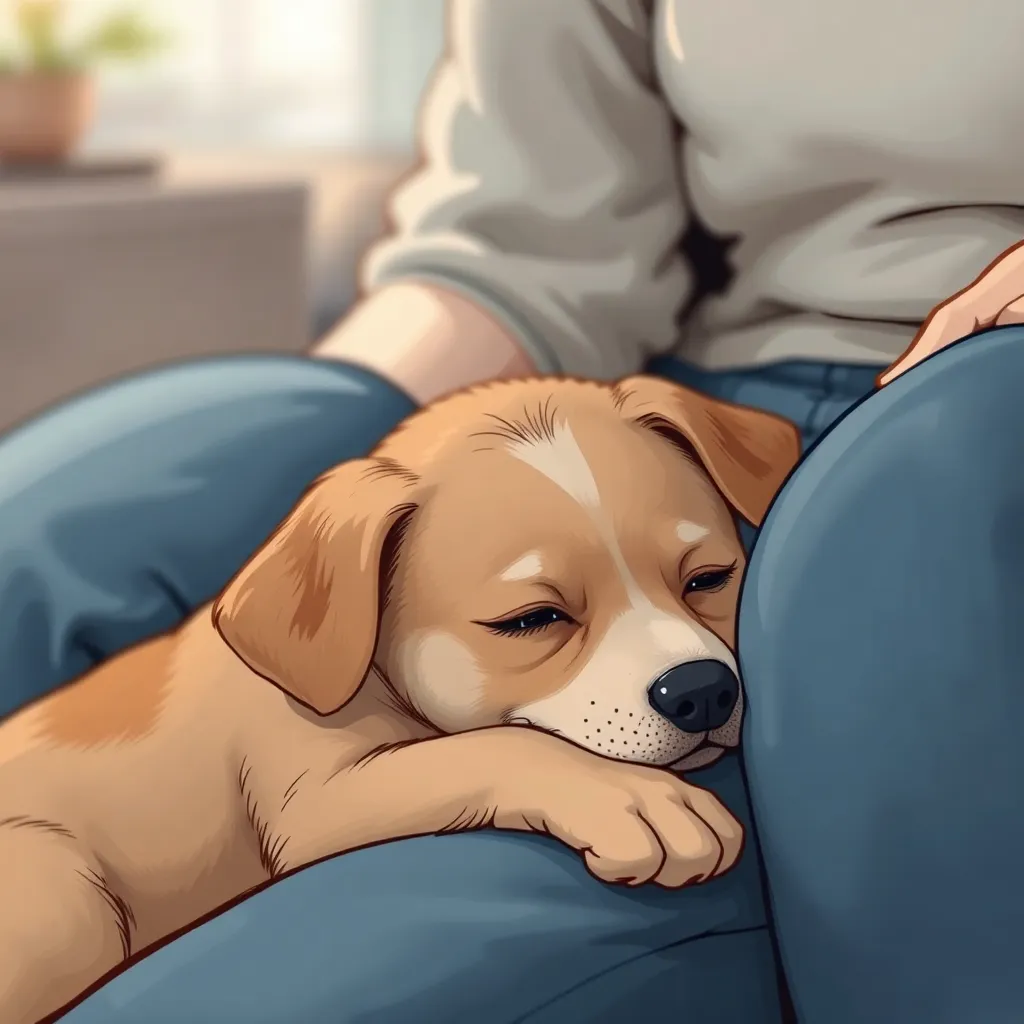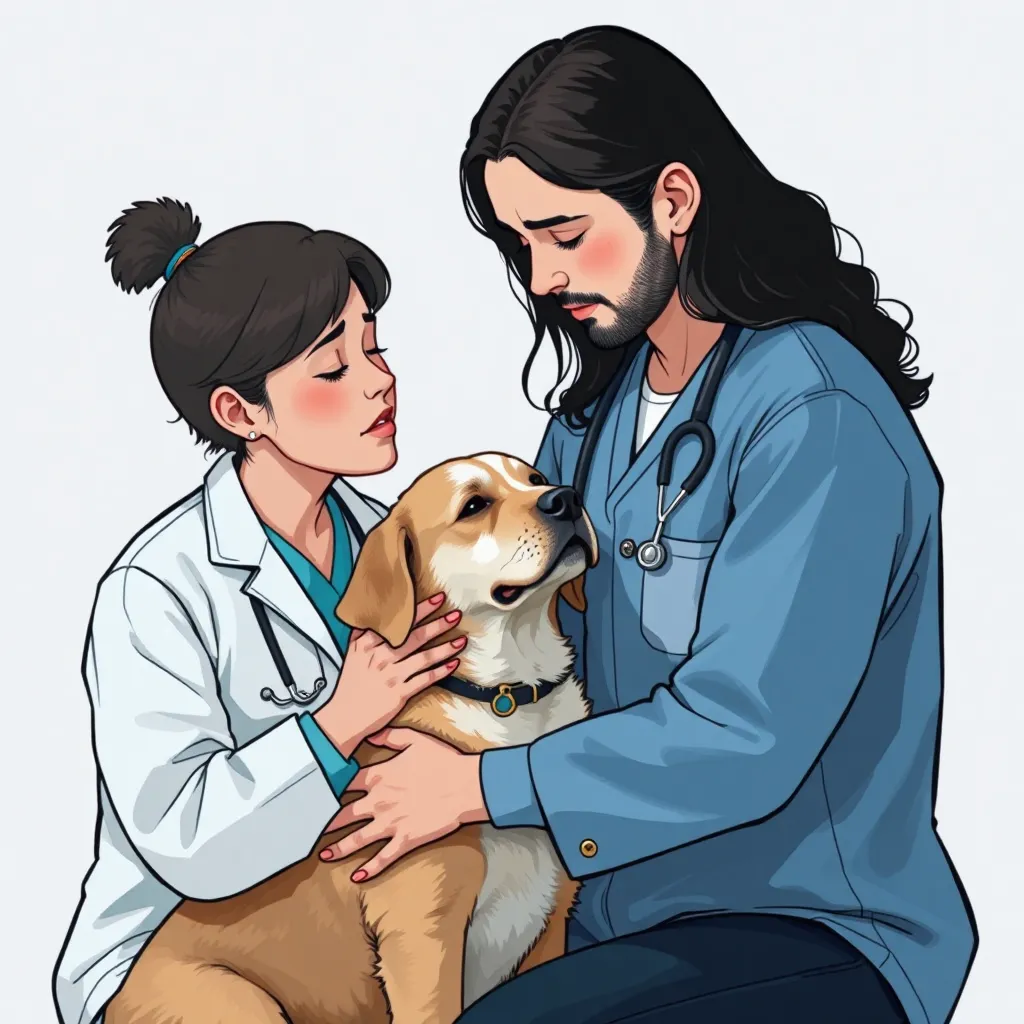Recognizing the end-of-life signs in your beloved canine companion is never easy, but understanding these subtle cues can help you provide the best possible care and comfort during their final moments. This guide will explore common dog dying signs, offering compassionate advice to navigate this difficult time. We’ll cover everything from physical symptoms to behavioral changes, helping you make informed decisions about end-of-life care for dogs.
Physical Signs Your Dog is Dying:
As dogs age, their bodies naturally decline. However, certain physical changes can indicate a nearing end. These include:
- Significant Weight Loss: Unintentional and dramatic weight loss, despite a good appetite, is a serious warning sign. This could indicate underlying illness impacting their ability to absorb nutrients.
- Lethargy and Weakness: A noticeable decrease in energy levels, difficulty rising, or apparent weakness are common signs a dog is dying. They may spend more time sleeping and less interested in their usual activities.
- Changes in Appetite and Thirst: A complete loss of appetite or a significant decrease in water intake is cause for concern. This can be indicative of organ failure or other serious conditions.
- Changes in Breathing: Difficulty breathing, rapid or shallow breaths, or gasping for air are serious symptoms. Observe for any unusual sounds like wheezing or rattling.
- Changes in Urination and Defecation: Incontinence, increased frequency, or changes in the consistency of urine or feces can signal organ failure or other serious health issues.
- Loss of Muscle Tone: Noticeable muscle wasting or weakness, especially in the hind legs, can be a sign of declining health.
- Changes in Temperature: Extreme changes in body temperature, either significantly higher or lower than normal, warrant immediate veterinary attention.
- Mouth and Gum Changes: Pale gums, excessively dry mouth, or a build-up of saliva can indicate dehydration or other systemic issues.

Behavioral Changes Indicating a Dying Dog:
Beyond physical symptoms, behavioral changes can also signal that your dog is nearing the end of their life. These include:
- Increased Rest and Sleep: While increased sleep is common in senior dogs, a sudden and dramatic increase in sleeping, even neglecting basic needs, can be a warning sign.
- Withdrawal and Isolation: Your usually playful and affectionate dog might become withdrawn, preferring isolation over interaction. This is often a sign of discomfort or decreased energy.
- Disorientation and Confusion: Some dogs may experience confusion, disorientation, or changes in their behavior, such as wandering aimlessly or seeming lost in familiar surroundings.
- Changes in Vocalization: Whimpering, whining, or excessive barking, especially at night, can indicate pain or distress.
- Lack of Interest in Favorite Things: If your dog suddenly loses interest in their favorite toys, treats, walks, or even you, it could be a sign they are losing the will to live.

What to Do When Your Dog is Dying:
When you suspect your dog is nearing the end, providing comfort and support is paramount. This includes:
- Veterinary Care: Consult your veterinarian immediately. They can provide accurate diagnosis, pain management, and guidance on end-of-life care options.
- Pain Management: Discuss pain management strategies with your vet to ensure your dog remains comfortable. Medication can alleviate suffering during this difficult time.
- Comfort and Support: Provide a quiet, comfortable space for your dog to rest. Offer plenty of water and, if they are still eating, small amounts of soft food. Spend quality time with your dog, offering affection and reassurance.
- Consider Euthanasia: Euthanasia is a humane option to end your dog’s suffering when their quality of life is severely compromised. Discuss this with your veterinarian to make an informed decision.

Saying Goodbye:
Saying goodbye to a beloved pet is incredibly painful. Allow yourself to grieve and seek support from friends, family, or support groups. Remember the joy and love your dog brought into your life.
Buy the products shown in this post by visiting this link: https://amzn.to/3Vj3OPx
FAQ:
- Q: How long does it take for a dog to die after showing these signs? A: The timeline varies greatly depending on the underlying condition and the dog’s overall health. Some dogs may pass within hours or days, while others may live for weeks or even months.
- Q: Is it cruel to let my dog die naturally? A: The decision of whether to let your dog die naturally or opt for euthanasia is a deeply personal one. It’s crucial to prioritize your dog’s comfort and quality of life. Consult your veterinarian to discuss the best course of action.
- Q: How can I know if my dog is in pain? A: Signs of pain in dogs can include whining, whimpering, restlessness, changes in appetite, reluctance to move, aggression, and changes in breathing.
- Q: What should I do after my dog dies? A: Contact your veterinarian for guidance on handling your dog’s remains. Many offer cremation or burial services. Allow yourself time to grieve and remember the wonderful memories you shared.
This article is for informational purposes only and does not constitute veterinary advice. Always consult with your veterinarian for any concerns about your dog’s health.
Share this content:






